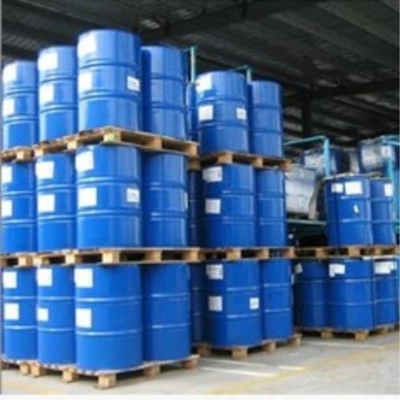China's largest sturgeon incubation and breeding base completed (10.5)
-
Last Update: 2003-03-12
-
Source: Internet
-
Author: User
Search more information of high quality chemicals, good prices and reliable suppliers, visit
www.echemi.com
OA show ('918 '); Chinese sturgeon, listed as an endangered species by the world conservation organization, has been fully protected and developed in China In October 1998, Sanshui City, Guangdong Province and China Academy of Fishery Sciences jointly established the "South China sturgeon breeding research base", which has become the largest artificial incubation and breeding base of Chinese sturgeon in China Chinese sturgeon, commonly known as Dalazi (Sichuan), yellow croaker (Hubei), sturgeon (Guangdong, Guangxi), etc., is a river sea migratory fish, with a maximum individual of more than 500 kg and a general life span of more than 30 years The Chinese sturgeon mainly lives in the waters of the continental shelf off the coast of China and migrates to the Yangtze River during breeding The Pearl River and Minjiang River are also distributed in China Chinese sturgeon originated in the Mesozoic 200 million years ago, is one of the oldest vertebrates, known as "living fossil", There are about 27 species of sturgeons in the world, most of which are distributed in the north of the Tropic of cancer, with the exception of the Pearl River group of Chinese sturgeon, which has crossed the Tropic of cancer and become the southernmost sturgeon species on the earth In 1988, Chinese sturgeon was listed as one of the national protected animals in China Due to the impact of human activities (such as fishing, water conservancy projects and water pollution), since the 1960s and 1970s, the number of Chinese sturgeons in the three major migration areas of China - the Yangtze River, the Pearl River and the Minjiang River - has declined dramatically, almost disappeared Acipenser sinensis is a migratory fish that spawns in the river Every summer and autumn, mature Acipenser sinensis migrates from the East China Sea to Jinsha River to spawn, and then migrates to the sea The Juvenile Sturgeon grows to more than 10 cm, and then returns to the sea After the closure of the Gezhouba River in 1981, the sturgeon could not go to the Jinsha River to spawn With the construction of the Three Gorges Dam in the past two years, the survival of Chinese sturgeon has been paid more and more attention Fortunately, unlike the endangered species such as Baiji, Chinese alligator, and giant salamander, Chinese sturgeon has great reproductive capacity, with the number of eggs per female reaching 100000 to 1 million With the major breakthrough in artificial propagation technology of Chinese sturgeon, Chinese sturgeon population is rapidly recovering and developing At present, more than 9000 square meters of the South China sturgeon incubator and breeding base has built 99 incubators, seedlings and breeding pools According to reports, the hatching rate of fertilized eggs of Chinese sturgeon here is 80%, and the survival rate is as high as 95% This year, the base has raised nearly 100000 Chinese sturgeon seedlings and adult fish In recent two years, in Guangdong Province alone, there have been a number of Chinese sturgeon farms in Sanshui, Zhongshan, Shunde, Panyu and other places, forming more than 200000 artificial populations on the basis of the original almost blank According to statistics, the population of Chinese sturgeon in Guangdong, Fujian, Hubei and other places in China has grown from less than 5000 at the end of 1997 to 250000 at present, which means that Chinese sturgeon will probably get rid of the long-term endangered situation In December 1999, the southern incubation and breeding base of Chinese sturgeon raised 15000 Chinese sturgeons in the Pearl River for the first time In the future, 15000 to 20000 Chinese sturgeons will be released to the Pearl River every year According to statistics, China has released more than 200000 artificially hatched Chinese sturgeons in the Yangtze River, Pearl River, Minjiang River and other waters in the past two years At the same time of artificial propagation reaching a certain scale, the protection of Acipenser sinensis also has new problems One is that too much stocking is not conducive to ecological balance According to ecological experts, too much stocking of Chinese sturgeon will pose a threat to other populations in the natural ecology Second, it is difficult for breeding enterprises to continue Due to the prohibition of sales, for a long time, as the main investor, the farm funds can only go out and cannot get commercial benefits The Chinese sturgeon has a very high economic character, and its growth speed is very fast It can exceed 5 kg in one age It has a very high edible and medicinal value Especially after the processing of sturgeon eggs, it is called black seed paste, which is called "Black Pearl" and "black gold" In order to better protect the Chinese sturgeon in the market economy, China should start from the reality and solve the new problems Nl7 (author:)
This article is an English version of an article which is originally in the Chinese language on echemi.com and is provided for information purposes only.
This website makes no representation or warranty of any kind, either expressed or implied, as to the accuracy, completeness ownership or reliability of
the article or any translations thereof. If you have any concerns or complaints relating to the article, please send an email, providing a detailed
description of the concern or complaint, to
service@echemi.com. A staff member will contact you within 5 working days. Once verified, infringing content
will be removed immediately.







